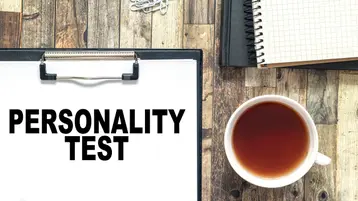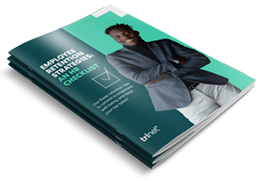
We’re all at least a little interested in ourselves. That’s why personality and strengths tests can be so fun. You can answer a few questions and gain a little bit of insight about yourself. Beyond providing a bit of entertainment and insight, personality inventories can be used at work as well. It’s not that these tests or assessments are a be-all and end-all rundown of how people are. Everyone is still an individual. Managers still have to figure out how to motivate each of the unique people under their charge. Coworkers still have to figure out how to work best with each person on their team. What these tests can provide, though, is some insight that can help make those discovery processes easier. But there are so many different tests out there. Some are more common while others are emerging or more obscure. How do you know which one is the right one for your team or business? Considering the price tag that can come with them, you’ll want to be fairly confident in your choice.
Top personality and strengths tests for the workplace
Here is a list of some of the most commonly available personality inventories for work. We’ve also broken down some of the pros and cons of each to help make your decision-making as easy as possible.
CliftonStrengths assessment
If you’ve ever taken the StrengthsFinder test before or read any of those books, then you’re already familiar with the CliftonStrengths assessment. StrengthsFinder was rebranded to the CliftonStrengths assessment in 2015. Founded by Don Clifton, his namesake assessment is an online assessment under the umbrella of Gallup. One of the central differentiators of the CliftonStrengths assessment compared to the rest is that it focuses almost exclusively on strengths. Of course, by not having a strength in a given area you can deduce that it’s a weakness, but that’s not how the test frames things. If you have a particularly sensitive group or some skeptics in the mix, this could be the right assessment for you. The results come in across 34 talent themes while identifying the central strengths (or talents) of each test taker. Also, unlike many of the other tests here, the results are more unique and individualized. Because there are 34 parameters and the test focuses on the top 5, you may very well be the only person in your organization with your exact combination of 5 strengths. The CliftonStrengths assessment can be really illuminating for the test-taker and perhaps even their manager. But it doesn’t help team members learn about each other to the same degree of usefulness. The results are straightforward and intuitively understandable.
Myers-Briggs Personality Type Indicator
Sometimes known as the MBTI, this test places people on a total of 4 personality spectrums. The 1st is extraversion versus introversion. The 2nd is sensing versus intuition. The 3rd is thinking versus feeling. The 4th is judging versus perceiving. The result is 1 of 16 resulting combinations of these letters that represents you. For example, ENFP would correspond to someone who is more extroverted than introverted, more intuitive than sensing, more of a feeler than a thinker, and someone who perceives more than they judge. The test is offered from a variety of sources, but the official one from the Myers & Briggs Foundation is more than 90 questions long. As you can imagine, it does take a bit of time to complete. On the positive side, the foundation offers many professional-focused resources to make the most of the test in a work environment.
The Enneagram
Rather than letters or spectrums, the Enneagram gives a result that’s just 1 number between 1 and 9. The numbers are situated around a wheel and each number can lean towards the ones adjacent to it, which the test refers to as a “wing.” For example, if you’re an 8 but lean close to a 7, you’d be an 8 with a wing 7. As the test explains, this is different than just being an 8. A unique element of the Enneagram test is that it breaks down each number across 9 levels that range from healthy to unhealthy. The highest, healthy numbers represent a given Enneagram type when they’re at their best. The lowest, unhealthy numbers represent a given type at their worst. The test doesn’t rank anyone on these levels, though. Rather than focusing on behavior, the test speaks most to a person’s internal motivators which can help struggling managers. Another bonus is that the test is applicable to people’s personal lives as well, not just their work lives. Unlike tests like Myers-Briggs, the Enneagram test takes only about 10 or 15 minutes to complete. The test also stands out because it has many interpersonal components, which can provide insight into how particular people work together. Companies like Truity specialize in offering the test in workplace settings. The biggest downside with the Enneagram is that it isn’t very intuitive right out of the gate. You have to spend a little time with it and how it’s made and what it refers to in order to really understand it and, thus, benefit from it. But once you do, it’s a test that many people identify with more so than others they’ve taken before.
NEO Personality Inventory
The NEO PI-R (or the NEO Personality Inventory-Revised) is touted as a “concise measure of the five major domains of personality,” sometimes known as the Big Five personality traits. These traits are neuroticism, extraversion, openness to experience, agreeableness, and conscientiousness. The test then dissects 6 subcategories within the 5 major ones. The test can be accessed by anyone with a 6th grade reading level or above. This one is a bit more customizable than the others. NEO comes in long and short versions. The full test has 240 questions while the shorter version has just 60, but that one is most often used with kids. Among the tests here, this is one of the most reliable ones — it’s the one that’s most used in psychological research.
DISC personality test
DISC refers to dominance, influence, conscientiousness, and steadiness. This test is sometimes known as the "colors test" because each element corresponds to a color. Dominance is represented by green. Influence is represented by red, conscientiousness by yellow, and steadiness by blue.
Unlike other tests, DISC is much more workplace-focused.
One of the biggest strengths of this test is that it helps to give everyone a common language. This can make understanding each other and their results an easier endeavor. Unlike other tests, DISC is much more workplace-focused. It can help test-takers understand things like how they respond to conflict and how they prefer to solve problems. This DISC assessment is brief, asking 54 questions that take about 5 minutes or so to complete. It’s most often used to gain an understanding of a person’s leadership style and to boost teamwork. The official resources for these tests are by far the best, most accurate, and most reliable. But there are plenty of websites that offer free versions of the tests if this isn’t in your budget right now. They can also be a great way to test them out yourself before deciding which one you want to commit to buying for the rest of the company. It never hurts to start small. Sometimes just starting is the best next step.
This communication is for informational purposes only; it is not legal, tax or accounting advice; and is not an offer to sell, buy or procure insurance.
This post may contain hyperlinks to websites operated by parties other than TriNet. Such hyperlinks are provided for reference only. TriNet does not control such web sites and is not responsible for their content. Inclusion of such hyperlinks on TriNet.com does not necessarily imply any endorsement of the material on such websites or association with their operators.






